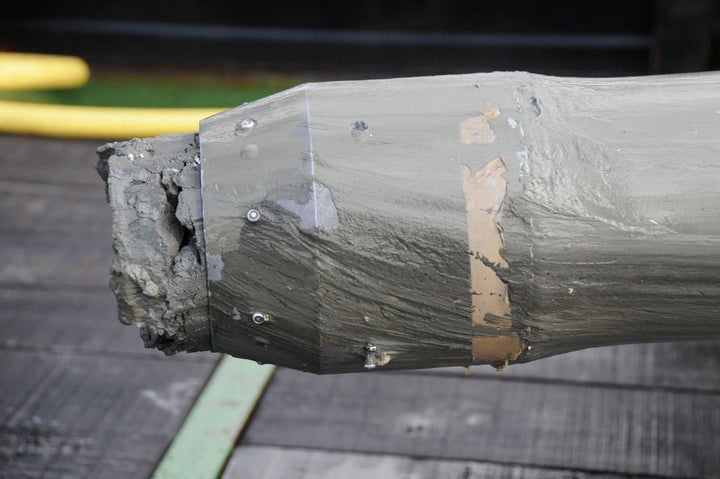
At first glance, there doesn't appear to be much happening in the mud buried 30 meters below the Pacific Ocean sea floor. But this ancient muck, which hasn't had a fresh shot of food or sunlight since the days of the dinosaurs, still harbors life--if just barely. Scientists have discovered that deep-sea microbial communities, buried for 86 million years, are still consuming oxygen, albeit at extraordinarily low rates. These microorganisms eking out an existence in slow motion reveal just how little it takes to sustain life on our own planet, and potentially on others.
Microbes such as bacteria are the most numerous organisms on Earth, and about 90% of them live in sediments buried under the sea floor. To take a peak at this microscopic life in its natural habitat, a team of scientists including Hans Røy, a microbiologist at Aarhus University in Denmark, traveled to the tropical waters of the Pacific Ocean. There, they collected mud from the sea floor, which builds up for millions of years like a giant layer cake as newer sediments pile on top of older ones.
The scientists jammed a large metal pipe 30 meters into the sea bottom and used a piston to suck out a long column of reddish clay. After hauling the sediment onboard, they probed the core with a needlelike sensor to measure the oxygen concentration in each layer. The researchers knew how much oxygen should have diffused down into each section of sediment from the seawater, so any "missing" oxygen meant microbes had consumed it.
Moving deeper through the core is like moving back in time, studying older and older communities of microorganisms. "We can use the Pacific as a natural experiment that has been running for 86 million years," Røy says.
In most places in the world's oceans, microbes consume all the oxygen less than 10 centimeters into the sediment and below that depth switch to using other compounds for respiration. However, in a column of mud from the North Pacific Gyre, an area 1000 kilometers north of Hawaii, the researchers detected oxygen stretching down to 28 meters because the microbial community was too sparse to consume it all.
Few microbes persist in this region, dubbed an "ocean desert." Its crystalline, nutrient-poor waters support scant quantities of the floating, microscopic algae that microbes feed on once the algae die. Because less than a millimeter of sediment accumulates every 1000 years, the few algae that fall to the sea floor are mostly consumed before they get buried. What's left over makes it deep under the surface and supports a meager population of microbes, which is too small to deplete all the oxygen. Scientists need the gas to still be present in the sediment to actually measure microbial rates of oxygen consumption. Thus, the core from the North Pacific provided a rare opportunity to assess the vital signs of old, deep microbe communities.
The scientists discovered that microbes can subsist on scraps of long-buried organic material because they consume it together with oxygen extremely slowly. Those living below 20 meters in the sediments of the North Pacific Gyre are consuming oxygen at a rate of 0.001 micromoles of oxygen per liter of sediment per year, the team reports online today in Science. At this rate, the microbes in 1 cubic meter of sediment would take about 10 years to consume the amount of oxygen the average person uses in one breath, says Tori Hoehler, a biogeochemist at the NASA Ames Research Center at Moffett Field in California who was not involved in the research.
Hoehler says that the research could inform the search for life on other planets. After determining whether an environment has enough water to support living organisms, he says, "these sorts of studies really address the next important question: Is there enough food for them to live?" Understanding life's requirements for energy is key to determining the potential for life beyond Earth, Hoehler says. "They've taken a significant step in showing us, based on our own environments, what those requirements are."
The findings also give Røy an appreciation for life here on Earth: "I find it so fascinating that you can take a cubic meter of mud and then store it for 86 million years, and somebody's still living in it."
ScienceNOW, the daily online news service of the journal Science